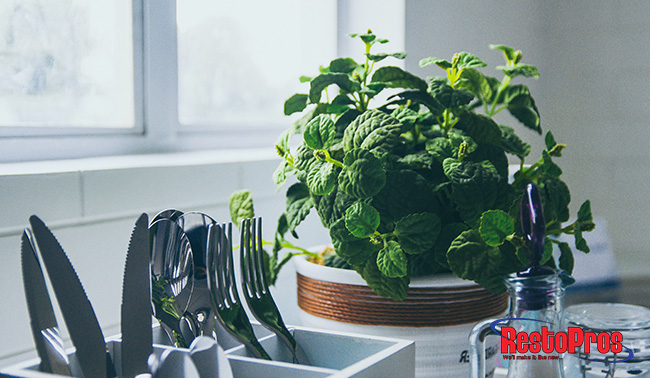Was your home in a flood?
by Admin
Posted on 06-03-2025 10:57 AM

Mold, like rot and insect infestation, is a home maintenance issue and these are generally not covered by standard homeowners insurance policies.
 However, in the event that mold growth is the direct result of a covered peril such as a burst pipe, the cost of eliminating the mold may be covered. If you have federal flood insurance, it may cover you for mold and/or mildew damage—but only if it is directly attributable to a flood. However, since it's unlikely you're covered for mold, it's even more important to keep your home mold-free—and in that effort, a strong offense is definitely your best defense.
However, in the event that mold growth is the direct result of a covered peril such as a burst pipe, the cost of eliminating the mold may be covered. If you have federal flood insurance, it may cover you for mold and/or mildew damage—but only if it is directly attributable to a flood. However, since it's unlikely you're covered for mold, it's even more important to keep your home mold-free—and in that effort, a strong offense is definitely your best defense.
When your home is safe to enter, dry out your home as quickly as possible to minimize mold problems and perhaps even prevent the growth of mold at all. Water damage specialists or mold remediation companies have experience with cleanups of flooded homes and can provide you the peace of mind of knowing mold problems will be properly taken care of. At a minimum, a maintenance or service professional that is experienced in mold clean up should check and clean your home heating, ventilating and air-conditioning (hvac) system before you turn it on. If the hvac system was flooded with water, turning on the system may spread mold throughout the house. https://7mx.z1.web.core.windows.net/moldinspectionwilmingtonnc/
If you use bleach
So what is someone concerned about indoor mold and mildew to do? first, you do want to make any structural changes to your home. Resealing windows and doors, adding ventilation, and even deploying an air purifier can help. However, you still need a tool that will help you vanquish mold and mildew.
 That tool is wet & forget indoor. Our all-purpose disinfectant, sanitizer, and deodorizer can help you tackle indoor mold and mildew, keep it from coming back, and eliminate that musty odor spores tossed into the air. The formula is gentle yet powerful. It contains no bleach or irritating fumes and is safe to use on virtually all indoor surfaces:.
That tool is wet & forget indoor. Our all-purpose disinfectant, sanitizer, and deodorizer can help you tackle indoor mold and mildew, keep it from coming back, and eliminate that musty odor spores tossed into the air. The formula is gentle yet powerful. It contains no bleach or irritating fumes and is safe to use on virtually all indoor surfaces:.
If you get a high humidity reading of 60% or more, make sure your air conditioner is doing its job. Is it set to the proper temperature? is it cycling on and off periodically? does it blow cold air when it reaches the set point? are the coils clean? inspect the condensate drain pipe (the narrow white pipe sticking out the side) to make sure it’s dripping regularly. If it isn’t, the pipe is blocked, and water may be accumulating inside the unit -- or on your floor. If you suspect a problem, call your hvac professional. To prevent blockage and mold buildup, pour a cup of bleach mixed with water down the drain annually.
Even small amounts of mold can release allergens into the air, making regular cleaning essential. ✔️ wipe down hard surfaces – use water and detergent. If needed, a 5% bleach solution can help (never mix bleach with other cleaners). Dry completely. ✔️ professional help for large mold problems – if mold covers more than 10 square feet, hire a mold remediation specialist. ✔️ clean air conditioning units regularly – mold can build up in hvac systems, so schedule regular maintenance. ✔️ wash moldy clothing properly – wash affected clothes with soap and water. If they can’t be cleaned or dried completely, discard them.
mold is found both indoors and outdoors in all climates and during all seasons of the year. Molds survive outdoors by using plants and decaying organic matter, such as fallen leaves, as a source of nutrition. Indoors, molds need moisture and a carbon source from building materials or building contents to grow. Excess moisture is generally the major cause of indoor mold growth. Molds reproduce by releasing spores that float through the air until landing in other locations. When they settle on wet or moist surfaces, the spores can form new mold colonies. The types of molds found in indoor spaces are not rare or unusual.
Mold… no one wants it in their home. Mold produces allergens and can cause health problems. Although mold is naturally found in the indoor environment, it won’t grow without moisture. Take steps to control mold and moisture indoors: reduce humidity: use exhaust fans or open windows in kitchens and bathrooms, and use air conditioners or dehumidifiers as needed. Prevent condensation by reducing humidity, increasing ventilation, or raising the indoor air temperature. Completely dry any damp or wet surfaces within 24 - 48 hours, and fix the source of the water problem or leak. If mold does grow in your home… promptly fix the source of the water problem or leaks.
No one wants to clear out of their home due to mold remediation, yet this happens to millions of american households annually. The u. S. Census bureau 2019 american housing survey found that 3. 7 million homes reported mold within the previous 12 months. We investigated common types of mold, symptoms of mold exposure, and the cost of mold remediation to help you prevent its growth in your home.